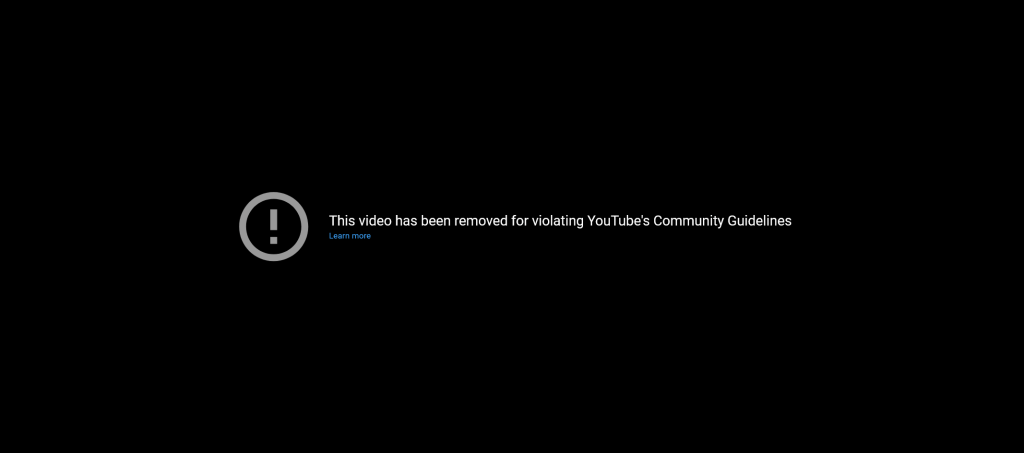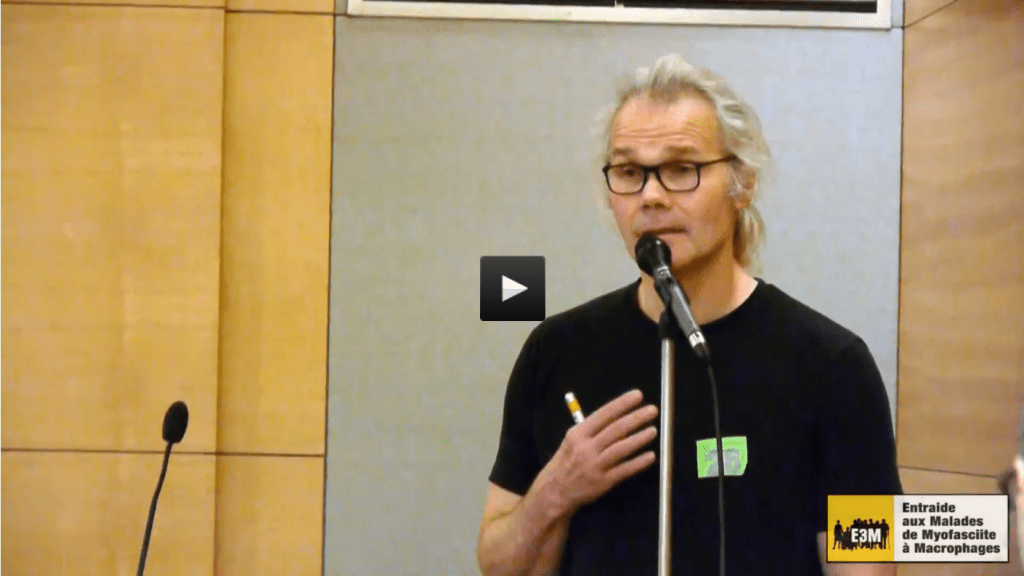Backlash: How the vaccine pushers turned true believers into vaccine sceptics – Part 2
What happens when clinicians and researchers uncover data that contradict the dogma that all approved vaccines are "safe and effective"?
In Part 1 of this series, I explored the ways that researchers aligned with the vaccine-industrial complex frame “vaccine hesitancy” amongst the public.
This post will focus on the other side of that coin: the challenges faced by clinicians and researchers who uncover data that contradict the dogma that all vaccines that gain regulatory approval are – say it with me now – “safe and effective”.
Suppression of Dissent
In a paper titled ‘Suppressing Scientific Discourse on Vaccines? Self-perceptions of researchers and practitioners’ four Israeli academics presented a qualitative analysis of the experiences of physicians, nurses and researchers who had taken a critical view on vaccines.
These well-credentialled professionals, whose names were withheld by the researchers to protect them from further harassment and discrimination, reported experiencing a wide variety of censorship and suppression tactics, including:
Defamation in legacy media and online, with clear intent to besmirch the reputation and destroy the livelihood of any clinician or scientist who questions vaccine safety and efficacy, and generally perpetrated by people or organisations that refuse to provide proof of their claims or engage in any kind of debate with their targets. Some respondents “pointed to what they viewed as an organized system designed to locate and attack critical publications on vaccines, aimed at undermining their authors’ credibility and delegitimizing them by referring [to] them as distributors of ‘fake news,’ misinformation and conspiracies that endanger public health”.
Online censorship, with Wikipedia providing a particularly striking example:
“If I try to add a line in Wikipedia about research against the measles vaccine for example – it will be removed immediately … Who censors Wikipedia? The answer is simple: the industry pays money to scientists and academics to enter information, track, and erase if necessary. (doctor)“
Suppressing Scientific Discourse on Vaccines? Self-perceptions of researchers and practitioners
Retraction of papers which had already undergone peer review and been published. Respondents reported that while publishers cited spurious concerns about methodological errors as the reason for the retraction, the real motivations were “politico-economic rather than scientific”, usually related to conflicts of interest involving the pharmaceutical industry.
“It’s blatant censorship of a topic, because of my perspective… there’s no other way to understand this, except for content restriction on my work. I mean, I was publishing in peer reviewed journals, I was being called to testify in states around the country… It was perspective related. If I had done pro-vaccine slanted, it would be fine. (researcher)“
Suppressing Scientific Discourse on Vaccines? Self-perceptions of researchers and practitioners
Denial of research grants. Several respondents who had successfully obtained grants for non-vaccine-related topics reported that that they were unable to obtain any funding for research on the topic of vaccine safety. The following vignette is particularly chilling:
“One well-established researcher we interviewed was no longer able to get grants for research on any topic after publishing a paper that raised potential concerns about the safety of vaccines:
I used to get all my funding from the normal sources – governments, charities, our research council industry. I do not get any of that funding anymore. All our research funding now comes from philanthropy… Now I do not even bother putting in applications to these organizations. We need to try to get funding through philanthropy to continue… (researcher)
Subsequent to our interview, the university administration also suspended his funding from philanthropic sources.”
Suppressing Scientific Discourse on Vaccines? Self-perceptions of researchers and practitioners
Calls for dismissal, being summoned for a hearing by their country’s Ministry of Health and/or medical licencing boards, and suspension or revocation of medical licence. Many respondents reported being subjected to these psychologically and financially costly forms of censure after publishing adverse data on vaccine safety, treating vaccine-injured patients, or publicly questioning vaccine safety and/or efficacy. They perceived that these actions were intended not only to punish them, but to deter other researchers and health professionals from publicly airing concerns about vaccines, resulting in self-censorship which fosters the narrative that practitioners and academics are in complete consensus on vaccine safety and efficacy.
When considered in toto, these tactics fulfill the criteria for “suppression of dissent”, that is, suppression of individuals and/or their research that is “carried out by those with a higher power or rank in the hierarchy, against others below them, and one that cannot be justified by conventional scientific or academic criteria alone”.
This suppression of dissent inevitably results in “violation of freedom of speech, violation of ethical principles of science, and neglect of important areas of research”. And the public is the biggest loser in this corrupt game.
Gary Goldman and the Great Shingles Cover-Up
The travails of Gary Goldman provide a vivid real-life case study of the suppression of dissent described by the anonymous respondents in the Israeli academics’ study.
As described in the book The Chickenpox Vaccine: A new epidemic of disease and corruption, and summarised in an interview conducted by Neil Miller, in 1995 Goldman was hired by the Los Angeles County Department of Health Services, to serve as the sole Research Analyst on a CDC-funded project to study the effects of the newly-introduced varicella vaccine on the incidence of both chickenpox and shingles.
The CDC eagerly published Goldman’s positive findings – an almost 80 per cent reduction in chickenpox cases from the licensure of the varicella vaccine in March 1995 through to 2000.
But when he began to detect evidence of both waning vaccine efficacy and harms inflicted by the vaccination program (in the form of a dramatic upswing in the incidence of shingles in both children and adults, especially in those who had already had chickenpox), Goldman encountered escalating opposition from the agency.
The CDC refused to publish his negative findings on the varicella vaccine, omitted any discussion of the precipitous rise in the rate of shingles from its published cost-benefit analyses of the vaccination program, and eventually, in 2002, ordered Goldman not to pursue any further studies of shingles.
Disgusted and appalled, Goldman resigned from his position in order to be able to publish his results, and to, as he put it, not “be a participant in what I perceived was research fraud”.
However, when he attempted to publish his concerning findings on shingles in a medical journal, the Los Angeles County Legal Department served him with a notice to “cease and desist” from publishing any information he had gathered as part of his employment.
At his own expense, Goldman retained an attorney to resolve the legal issues, and subsequently was able to publish his findings in the journal Vaccines (here, here and here). However, the CDC contacted the journal’s publisher, Elsevier, claiming that the data Goldman used in his analyses were confidential and he had no right to them. Goldman faxed Elsevier’s senior publishing editor the letter his attorney had sent to the LA County Legal Department, and assumed the matter was resolved when he received no response.
But CDC hadn’t given up its harassment campaign. As Goldman explained,
“Another one of my studies (16) that modeled additional costs associated with the universal varicella vaccination program due to the increased rates of HZ [herpes zoster - shingles] was postponed for an entire year from appearing in the print edition of Vaccine after Elsevier received a complaint from the CDC. Resolution of this delay required intervention by my attorney.”
Interview with Gary Goldman, PhD on CDC suppression of undesirable vaccine data
Goldman summarised his findings on the impact of varicella vaccine on shingles incidence in a 2013 publication, as follows:
“In a cooperative agreement starting January 1995, prior to the FDA’s licensure of the varicella vaccine on March 17, the Centers for Disease Control and Prevention (CDC) funded the Los Angeles Department of Health Services’ Antelope Valley Varicella Active Surveillance Project (AV-VASP)… Varicella [chickenpox] case reports decreased 72%, from 2834 in 1995 to 836 in 2000 at which time approximately 50% of children under 10 years of age had been vaccinated. Starting in 2000, HZ [herpes zoster, commonly known as shingles] surveillance was added to the project. By 2002, notable increases in HZ incidence rates were reported among both children and adults with a prior history of natural varicella. However, CDC authorities still claimed that no increase in HZ had occurred in any US surveillance site. The basic assumptions inherent to the varicella cost–benefit analysis ignored the significance of exogenous boosting caused by those shedding wild-type VZV [varicella zoster virus – the causative agent of both chickenpox and shingles]. Also ignored was the morbidity associated with even rare serious events following varicella vaccination as well as the morbidity from increasing cases of HZ among adults. Vaccine efficacy declined below 80% in 2001. By 2006, because 20% of vaccinees were experiencing breakthrough varicella and vaccine-induced protection was waning, the CDC recommended a booster dose for children and, in 2007, a shingles vaccination was approved for adults aged 60 years and older. In the prelicensure era, 95% of adults experienced natural chickenpox (usually as children)—these cases were usually benign and resulted in long-term immunity. Varicella vaccination is less effective than the natural immunity that existed in prevaccine communities. Universal varicella vaccination has not proven to be cost-effective as increased HZ morbidity has disproportionately offset cost savings associated with reductions in varicella disease. Universal varicella vaccination has failed to provide long-term protection from VZV disease.”
After Goldman’s devastating exposé was published, the CDC fessed up to the blatant data fraud it had committed for well over a decade, sacked the personnel who had been responsible for the cover-up, withdrew the chickenpox vaccine from the market, compensated everyone who had been harmed by it, and promised not to let any more dodgy vaccines onto the market.
Just kidding. They retained the two-dose schedule in their childhood vaccination recommendations, approved a combination measles-mump-rubella-varicella vaccine which made it harder for parents to dodge the chickenpox vaccine if their child had either already had the disease, or they didn’t think it was necessary to vaccinate against it, added a two-dose schedule to the adult recommendations for everyone born after 1980, and retained the recommendation for a two-dose schedule of the shingles vaccine that had only become necessary as a result of introducing the chickenpox vaccine. Because Science™.
An Iron Curtain Descends on Mr Aluminum
Goldman’s gothic tale is far from unusual. Christopher Exley is one of the world’s leading authorities on aluminium and its effects on human health. In fact, due to his nearly four-decade-long quest to understand the impact of aluminium on biological systems, summarised in his book Imagine You Are An Aluminum Atom, Exley has become widely known as “Mr Aluminum” (surrendering to the US spelling of this ubiquitous element, despite his English provenance).
Unsurprisingly, the aluminium industry ran interference on the dissemination of Exley’s research findings, but up until 2016, Keele University, where Exley serves as a professor of bioinorganic chemistry, fully supported his research.
But when Exley and his research team began uncovering evidence that children who had died with a diagnosis of autism had exceptionally high levels of aluminium in the microglial cells of their brains, and linking this with the burgeoning use of paediatric vaccines that include an aluminium adjuvant, Keele’s relationship with Mr Aluminum began to turn sour.
Exley, by the way, did not start out believing that aluminium-containing vaccine adjuvants played a significant role in the development of autism. YouTube views discussion of the process by which Exley, reluctantly, changed his mind as a violation of their Community Guidelines (one wonders which “community” they had in mind when drafting these guidelines – Stalin’s USSR or Mao’s China, perhaps?)…
… but fortunately the Wayback Machine has preserved Exley’s presentation on his findings, which you can watch here:
After a change in administration and funding sources, Keele University began to undermine Exley’s work, initially with subtle strategies including “spiking” press releases that Exley wrote to publicise his research findings, and downplaying or ignoring major scientific contributions by his research group.
The university’s sabotage program eventually escalated to disabling Exley’s website and preventing him from receiving philanthropic donations to finance his research. As a direct result of Keele cutting off his ability to receive funding from individuals and groups that wished to support his work, the Exley group ceased their research on 31 August 2021.
Before his vital research was unceremoniously terminated, Exley responded to a 2019 article in the BMJ titled ‘Information wars: tackling the threat from disinformation on vaccines’, which decried “the role played by disinformation spread through social media” in fomenting “vaccine hesitancy”, and urging public health authorities to “employ much more sophisticated messages” to “confront… disinformation”.
Exley’s response was razor-sharp:
“My group researches vaccine safety. We undertake research to understand the role of aluminium adjuvants in vaccination and how these adjuvants may be linked to serious adverse events following vaccination. Upon completing our research we submit it for peer review and if accepted it is published.
Is this what the authors of this editorial consider as ‘misinformation’?
The approach taken by the authors of this piece is exactly why vaccine hesitancy exists. Those of us researching the safety of vaccines know that they are not 100% safe for everyone, the vaccine industry knows this and they are required by law to put this information on the patient information leaflets provided with every vaccine. Only the Government and people like the authors of this article deny the potential dangers of vaccination. Their denial is what sparks vaccine hesitancy in the public as the public are very much aware of potential dangers.
Until individuals such as the authors of this article remove their heads from the sand and allow a full and transparent debate on vaccine safety the problem of vaccine hesitancy will only become even more widespread.
Politics should not ‘trump’ human health.”
Rapid Response: Re: Information wars: tackling the threat from disinformation on vaccines
But as Exley well knew after decades of repeated assaults on his research endeavours, first by the aluminium industry and then by the vaccine-industrial complex, politics has been trumping human health for a looooong time. We’ll delve into how and why this has been allowed to happen, in the final part of this series.







What happens when clinicians and researchers uncover data that contradict the dogma that all approved vaccines are "safe and effective"?
They will identify the following culprits:
1. Putin
2. Trump
3. Climate change
4. Whistling
5. Gardening
6. Sleep postures
7. Unbridled laughing and crying
8. Riding elevators
9. Tea
10. Wages, post codes and parents
11. Shower habits
12. Falling asleep with the TV on
They do the same things in regards to other globalist lies, such as global warming. I know a professor who has his salary cut down by 80% because he spoke against man made climate change.